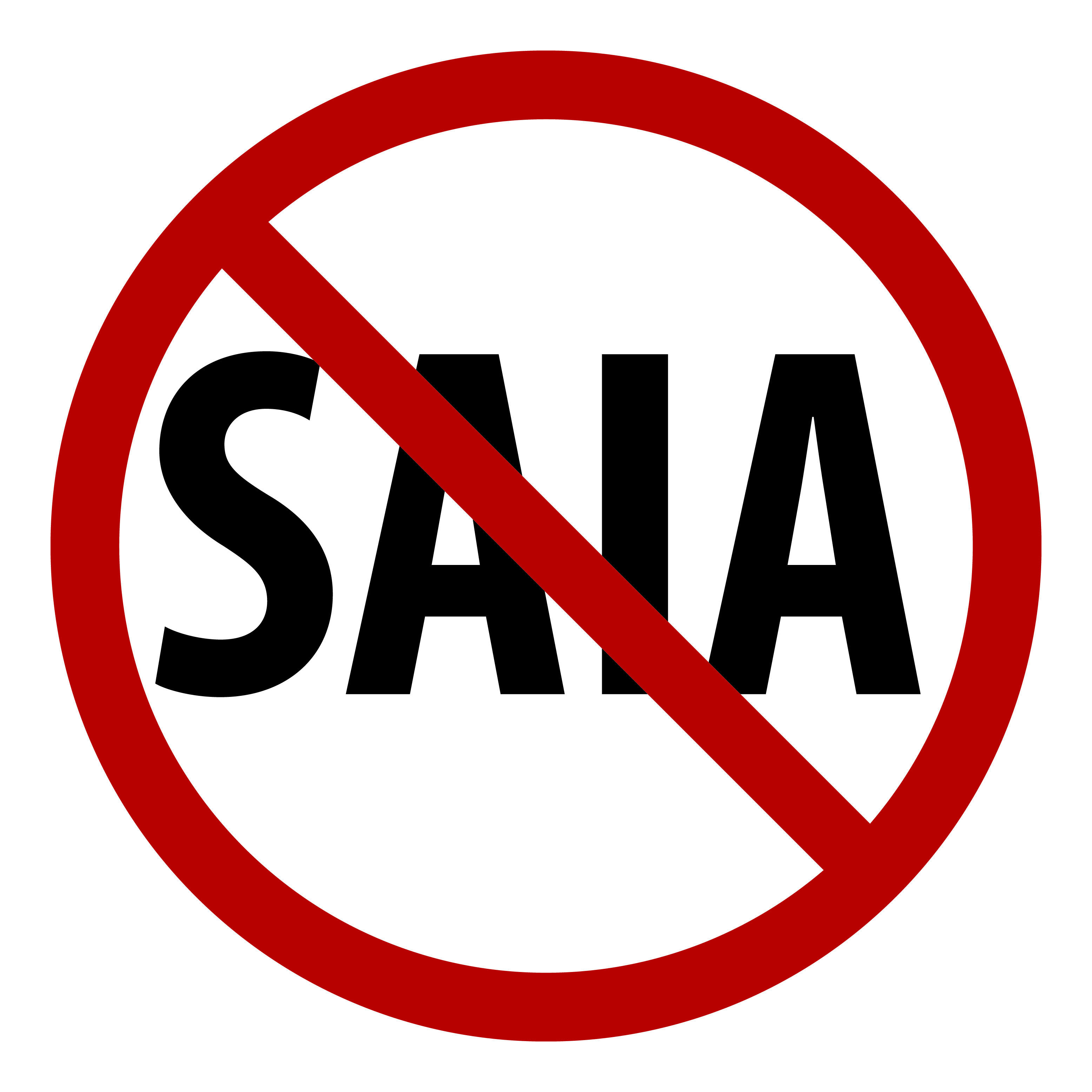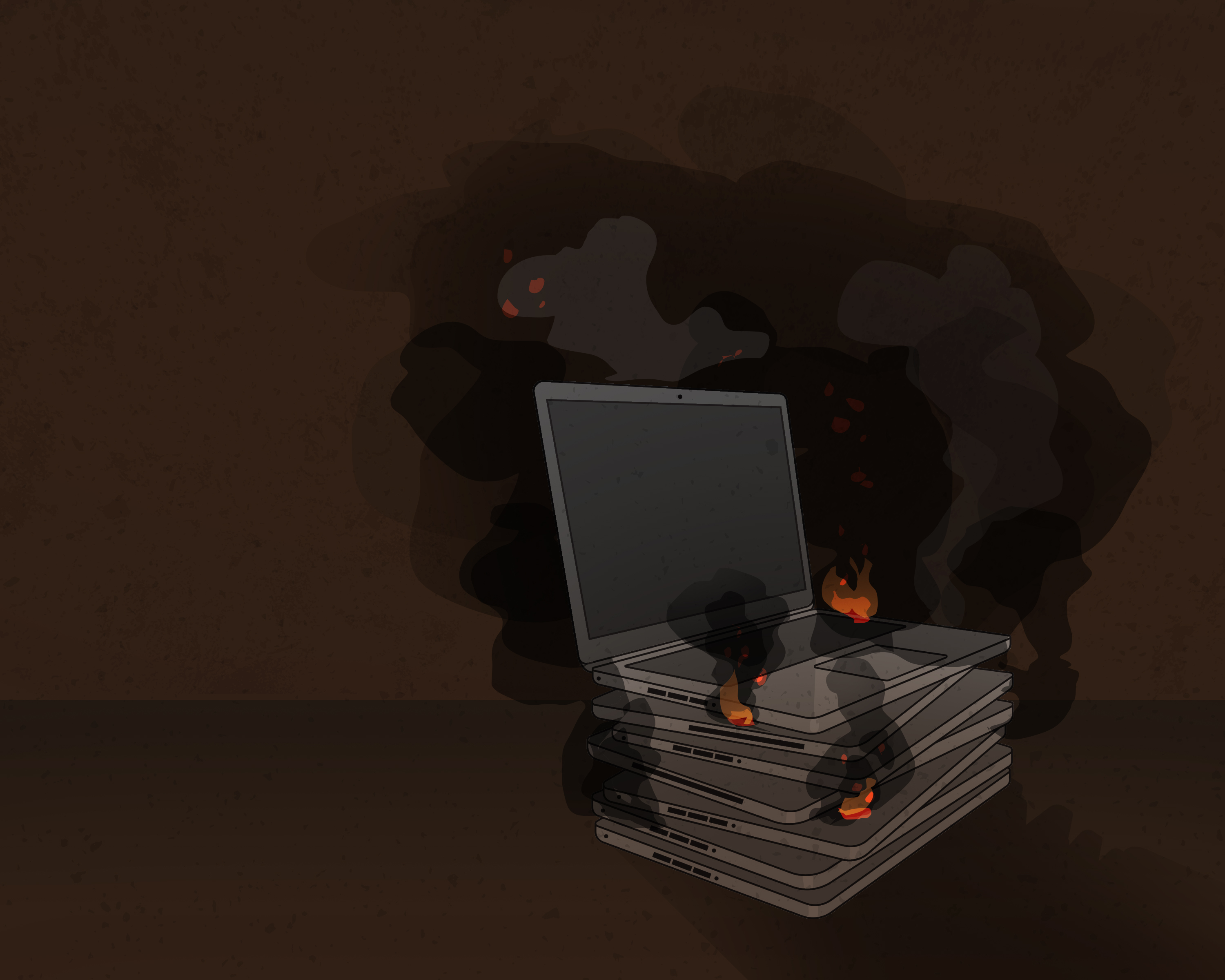UMSU council has voted to remove official student group status from Students Against Israeli Apartheid.
This past April 11, Josh Morry, Commerce Students’ Association representative and member of the University of Manitoba Students’ Union (UMSU) Council, tabled a motion to “remove [SAIA’s] student group status, and ban it from operating in UMSU spaces,” on the grounds that the group and events like Israeli Apartheid Week (IAW) make self-identified Zionist students “fear for their safety” on campus. The motion passed 19-16 and resulted in the de-recognition of SAIA’s student group status.
IAW is held annually, on and off campuses across the country. SAIA and local affiliate groups host debates and information sessions, as well as disseminate materials and screen films critical of Israel’s treatment of Palestinians. SAIA advocates for the imposition of Boycott, Divestment and Sanctions (BDS) against the state of Israel by university campuses, on the grounds that Israeli dominance over Palestinian people and lands amounts to apartheid.
To successfully ban the group, Morry and others appealed to UMSU Policy 2009, which states: “UMSU does not condone behaviour that is likely to undermine the dignity, self-esteem or productivity of any of its members or employees and prohibits any form of discrimination or harassment whether it occurs on UMSU property or in conjunction with UMSU-related activities.”
Policy 2009 is “very vague in its terms,” said Morry in an interview with the Manitoban, adding, “but it’s vague for a reason, because UMSU goes beyond the call of duty to protect minorities, to protect students at risk, to protect people who feel threatened.”
Morry argued that the nature of the policy assumes that a student group (like SAIA) need only be guilty of creating “the conditions where dignity or self-respect [of students] could be undermined” in order to be banned. The policy was invoked effectively and Morry managed to persuade a majority of council members to ban the group.
“We’re differentiating between Zionists and Jews [ . . . ] but I’m saying this is a point about Zionists, where calling someone a racist on campus violates the policies. It’s incitement to hatred.”
Morry later added that “[Zionism] is not a ‘political view.’”
“I’m not a supporter of the Israeli government [for the sake of this motion]; I’m a supporter of the concept of a Jewish homeland for the Jewish people. To call that a racist doctrine is not allowed.”
Ultimately, Morry has “national goals” for what might become of this ban but cites securing the safety of all students on campus as his first priority.
“We’re lucky that it hasn’t been as volatile here as other places. [The U of M is] where [York] was a few years ago. Will it get to that point, I’m unsure – but I say, ‘why risk it?’”
Motion’s language contentious to some
One critique of the structure and rhetoric of the motion is that it fails to differentiate between the Jewish religious or cultural identity and the perceived political ideology and nationalism of Zionism.
“I think it is dangerously false to assert that ‘most Jewish and Israeli UMSU members are Zionists,’ as the motion does,” said former UMSU vice-president advocacy (2012-2013) Jennifer Black in an interview with the Manitoban.
“Those who put forward and spoke in favour of the motion successfully conflated the religious identity (Jewish) and the national identity (Israeli) with the political ideology (Zionism), and that conflation did a good deal of work to sway our council.”
Though Black has no formal affiliation to SAIA, she questioned whether there was “a lack of critical analysis in the room when the motion was passed.”
“Those who spoke in favour of the motion spoke with emotion, and I believe that this emotional testimony carried the weight.”
Banning SAIA violation of free speech?
Critics have claimed that banning the group is an infringement on SAIA’s freedom of speech and amounts to an attempt to silence dissenting viewpoints.
“Ironically, it’s [SAIA] which is being discriminated against by this motion,” said Brian Latour, current member of the WCAIA and the Canada-Palestine Support Network, as well as one of SAIA’s founding members.
“This motion discriminates against [SAIA] based on [their] political beliefs and activities, and those are protected under the Manitoba Human Rights Code. Our group hasn’t engaged in any discrimination or harassment. We have in our constitution, which is submitted to UMSU as part of the student group approval process every year, that we’re opposed to all forms of racism – including anti-Semitism.”
Morry asserts that there are generally obvious limits to freedom of speech; respectful workplace policies dictate what opinions may or may not be considered appropriate depending on the context and space in which they are expressed.
“The courts have found that a university campus is actually similar to a workplace because we’re in an enclosed space. It’s not a public [place as a park is] because I’m forced to come here everyday. It’s my job, I’m a student,” said Morry.
“So if this space is made unsafe for me, then it becomes a hotbed for me and I am forced here everyday. It’s the same reasoning behind respectful workplace policies, which is why the UMSU policies exist. And we use the policies all the time; we protect the LGBTT community, we protect international students, we protect women that feel threatened.”
According to Latour, SAIA members began all meetings taking place during IAW with a statement denouncing discrimination, anti-Semitism, and Islamophobia. Latour added that every year leading up to IAW, members of SAIA speak with the University of Manitoba human rights and advisory services office.
“They’ve never had any problems with anything we’ve done. There’s no evidence that that the group is engaged in any discrimination or harassment, yet we’re being accused of that.”
Legality of the injunction
The banning of SAIA was heralded as a “precedent-setting move” by Frank Dimant, executive vice president of B’nai Brith Canada, one “that should be emulated by students on every campus where IAW events take place.”
This is not, however, the first case of any student group being banned from a Canadian university campus. The University of British Columbia Students’ Union de-recognized the anti-abortion Students for Life (SFL) group based on complaints levelled against them. Although SFL appealed the ruling, the Supreme Court of British Columbia later upheld the original decision.
Whether any legal action will be taken against UMSU in this case is something that remains to be seen, though it was a point of concern for then-UMSU president and SAIA group member Bilan Arte. According to Arte, in the weeks leading up to the delisting of the student group, members of UMSU sought legal advice on the motion to determine whether the union would potentially be left exposed to litigation by SAIA in the future were they to go through with the ban.
“The [legal] opinion said that the [SAIA] hadn’t violated any of the existing rules and regulations that govern student groups,” noted Arte. “The opinions of student groups don’t necessarily reflect or represent the opinion of [UMSU].”
Arte said the tolerance of and diversity in student groups on campus with differing viewpoints further attests to this fact, pointing to the continued coexistence of ideologically polarized pro-life and pro-choice groups as examples.
Arte went on to explain that “there wasn’t any material evidence, physical evidence, documented evidence of there being instances that would undermine [ . . . ] the university’s respectful workplace environment policies [ . . . ] That was something that our legal counsel wanted to have access to.”
“It would be nice if we had more documented incidences of harassment or discrimination, inciting hate, so that we could, as an organization, protect ourselves from legal liability in the future should this student group decide to take us to court over it.”
Regardless, according to Arte, the resolution expired at the end of the 2012-2013 council’s term on April 30 and is no longer in effect, meaning that SAIA can technically reapply for its student group status along with all other groups this fall.






I would be very interested in knowing what other student groups on campus could be banned under Policy 2009. Proving there is a possibility that a group could create “the conditions where dignity or self-respect [of students] could be undermined” is a very low bar.
I would suspect several student groups would fall into this category.
Once again the Manitoban reports half the story, or in this case gives credibility to individuals that have not earned it. In this case I speak of the quotes from the former UMSU Executives. Jennifer Black is presented as a neutral party, yet evidence has been presented that proves that she is not only a supporter of SIAI and IAW, but in fact seconded Mr. Latour’s original motion for UMSU to support IAW.
What I find more concerning is her reference to “a lack of critical analysis in the room when the motion was passed.” Evidently she was not paying attention in the 3 meetings this was discussed. Perhaps she, like Ms. Arte, felt it was too much and decided to put her head down for a nap mid debate (there is photographic evidence of this for Arte.) This motion fostered the longest meetings in recent memory for UMSU, with the one where the actual motion was passed having multiple motions to extend debate time. The one way this could be argued as not critical analysis is because council did not come to the same conclusion as Ms. Black.
In regards to Ms. Arte’s comment of the resolution expiring at the end of her term, this is in fact a shady tactic that her Executive used. When the motion was sent to Executive council, Ms. Arte reported that they did not amend the motion, and passed it on as it was. Because of this, no one examined the writing as closely as they should have, assuming it was the same motion they had read at the previous meeting. This is not the case. The UMSU executive reclassified the motion to a Standing Motion, expiring with the current councils term. But this is just 1 of countless examples of the corruption of the prior executive, I encourage anyone interested to read the minutes from their final council meeting to see others.
I think its super weird/disturbing how fixated this Robert person seems on past female executives…. #creepy #sexist
I’d like to note that when interviewed I responded that at the time of the motion passing, and for the duration of my term as Vice-President Advocacy, I did not have a formal relationship with SAIA. It would not have been appropriate for me to be formally associated with any student group during my time as an executive. I also stated that I have participated in past SAIA organizing.
Just because something was discussed does not mean that it was critically evaluated.
The motion came forward as a Standing Resolution and was not altered by the Executive Committee. The motion aimed to revoke SAIA’s student group status, and that status is only granted in one year increments.
Robert Paulson, you must be a supporter or even a member of the current UMSU exec. Your name, I’m guessing, is a reference to Fight Club. The nihilistic self-destructive ethos from that movie is oddly applicable to what the anti-free-speech crowd (including you?) did to UMSU’s reputation. Your comment is full of silly conspiracy theories and misleading information.
First of all, you refer to Jennifer Black supporting a motion moved by Brian Latour, but failed to note that this was a motion from over two years ago for UMSU to support free speech and student rights’ to organize on campus, and as with every motion of support, was classified as a standing resolution expiring at the end of the Council’s term. In respect to your comment regarding the analysis of the motion from this past year, the motion was only mentioned at two meetings of Council, when it was moved on March 28 and when it was discussed and voted on April 11.
Your reference to “photo evidence” (of Ms. Arte resting her head when the Council had motioned for a short recess) comes across as petty and offensive. From my view, the recess was moved by a supporter of the motion so that they could go in the halls and strategize for the vote, including a motion to vote by secret ballot to hide any accountability. I also saw this photo when someone posted it on facebook for a short time, but what’s most interesting to me is from the angle of the shot it came from the direction of where the current UMSU VPE was sitting for the meeting. Now I am not into conspiracies like you, but I do find this interesting.
I would also note that critical analysis wasn’t achieved in this meeting as it was obvious to me that the meeting was organized beforehand on how people were supposed to vote, what motions to bring forward and when, and all but one of the seven proxy votes appeared to be in favour of the motion.
In response to your conspiracy theories surrounding Ms. Arte’s executive, I would again point out that almost all motions to endorse or oppose something is considered a standing resolution, unless it specifies otherwise. There was no change of the motion from the executive. It was classified as all motions are classified. Robert Paulson, your false allegations of corruption and conspiracy toward the previous executive are harmful to all students who believe in free speech, but mostly just embarrassing, naive, and short-sighted.
It’s sound thinking to ban fascists and others who promote hostility, violence and racism. The SAIA is but another example of groups who attempt to manipulate the free thinking of university students by slurring the line between legitimate protest and ideological bigotry. The action of the UMSU is a move toward higher quality and diversity and a challenge to all who would attempt to stigmatize and create an environment lacking reason and safety on campus. I salute the action. .
Sarah, you must be a mindless follower or even a member of the previous UMSU exec. Your name, I’m guessing, is a reference to Sarah Palin. She, as well as you and your crowd, seem to convinced the majority is wrong when you lose. Your comment is full of simple factual errors.
First of all, I used the motion Jennifer Black supported as proof of a prior history on the subject. Time frame is irrelevant when one is seeking to establish said history. True the motion was was moved on March 28 and when it was discussed and voted on April 11. It also was raised at the meeting prior to March 28th, the date escapes me, as an emergency motion. At that time debate started, and got fierce quickly. I would like to point out that the inept chairing of UMSU meetings was evident throughout this entire process, and in fact that meeting in question was never formally adjourned. The chair attempted to shut down debate, before time had elapsed, and he himself asked if there were any motions to adjourn. He called the meeting adjourned without even calling a vote.
My reference to “photo evidence” was not during the recess, it is premature of you to assume that was the case. The photo was taken during the proceedings, long before the recess was called. You accuse me of conspiracy theories but counter with plenty of your own. The recess was called to allow heads to cool, members to take a breather, and to break up a marathon session of council. If any strategy had been discussed and implemented in this time it was by the Exec at the time. During the meeting the Chair spoke with both Ms. Arte and UMSU’s Executive Director, Cathy Dowd, and when the meeting resumed the stances taken by the chair were noticeably different. As well, the secret ballot vote was called for many reasons, and can be said to be a great success. Unlike many votes in UMSU council, there were no abstentions. This is major, it means that these Councillors did not feel restrained in casting their vote. Just as importantly, I would draw your attention to the chaotic cesspit that was the UMSU Facebook page after this motion. The fact that the votes on members was not public saved many from an excessive public attack, from students of our own institution, as well as others across the nation. Finally, I wish I had your ability for perception. You claim to be able to tell not only what section of the room such a small image was taken, but who took it. Lets not attempt to drag others through the mud without evidence, and thereby preserve some semblance of a discussion.
“I would also note that critical analysis wasn’t achieved in this meeting as it was obvious to me that the meeting was organized beforehand on how people were supposed to vote, what motions to bring forward and when, and all but one of the seven proxy votes appeared to be in favour of the motion.” Sorry to break it too you, but that is a conspiracy. Think what you will, you are entitled to that, but just because someone voted the opposite of what you wanted doesn’t make it some grand conspiracy.
There is no precedent of all motions being standing resolutions, and being bound to that time frame. It may be the standard operating procedure, but motions from the floor are not standard operating procedure. Striping SAIA of its official status was only part of the motion, and by making it as it now is, the UMSU Exec of the time lied to council, and the student body, by saying they did not edit the document. This is not a conspiracy theory, this is fact.
Only a few months ago, SAIA organized an event at The Hub where one of the speakers was professor Mark Golden, a member of IJV. Under his motion, SAIA would be banned from holding that event again.
Why does Josh Morry want to censor Jewish speakers on campus?